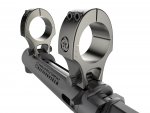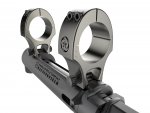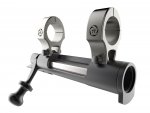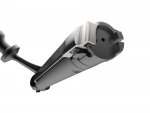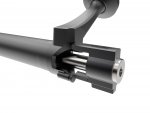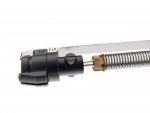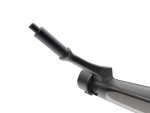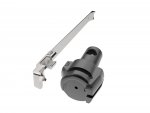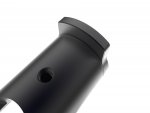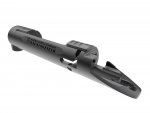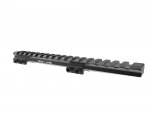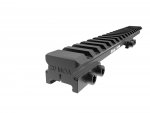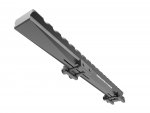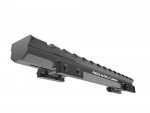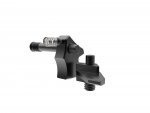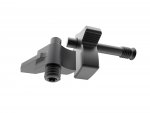I'm not aware of any Rem 700 triggers that have bolt locking capability. If anyone is, I would appreciate a link so that I can have a look. But I am certainly sympathetic to your desire for one. A bolt locking feature is nice. I incorporate a bolt lock into the Model 2 and well as the Model 1, which was never made public outside of the USPTO database. See patent number 7,743,543. I'm not sure how one would pull this off in a Mausingfield but my first guess would be something similar to what your described, that is slotting the bolt in front of the cocking cam and then engaging that slot with a blade sliding along the sear bar of the fire-control assembly. but packaging all of that into a small envelop would be tricky but doable, maybe.
I've though about designing a trigger for the R700 and our actions. I would likely favor a 3-bar configuration similar to the old Canjars (if I'm thinking about those correctly) with no frills. Conceptually, trigger design is mostly about reducing the contact force between the two little piece of metal that slide by one another before releasing the striker. There are a number of ways to do this and all but the TriggerTech use leverage to do it. Three levers, like the Canjars, Anschutz with the long sear bars, or the Jewell with their toggle mechanism are very good solutions. TriggerTech inserted a roller between the two components that would otherwise be sliding against each other nearly eliminate friction therebetween. But as I indicated earlier, nothing is free. TriggerTech paid of for the roller with an increase in stress within the load bearing components and that stress is by no means insignificant, something that I would bet they are very aware of. The TriggerTech Diamond seems prone to dropping the striker if the bolt is cycled very quickly. I like their triggers but with some practice during this past Shot Show, I was able to drop the sear 5 out of 5 times. 3 out of 5 was more typical. But in all fairness to those guys, I had this thing set to a really light weight and I'll be the first to admit that nearly all triggers set to really light weights are accidents weighting to happen. I can't say I understand the Bix'n Andy. They use a ball stack but it doesn't seem (to me) that the balls are rolling over one another. It seems like something must be sliding and maybe the balls just provide very inexpensive but strong and smooth surfaces that are good at sliding. Not sure. I like to take a closer look at one some day.
The trigger described in my patent 7,743,543 reduces the sliding contact forces by means of a roller carried upon the striker assembly and impinging upon the sear. I works but I'm not a huge fan of tiny little parts. It also used a four bar linkage configuration having a sear to trigger movement ratio of about 3:1. That is, move the trigger, say 0.010" and the sear moves 0.030". To get that to work, sear friction must be reduced and hence the striker mounted roller. That arrangement will not function well at very light weights, rather it works great at pull weights of 3+ pounds. What's unique about it is that it provides for a single stage trigger with lots (0.040") of sear engagement. That means its probably pretty safe.
Yeah, triggers. I've done more than just think about them. There is certainly opportunity in that area and I'm sure we will see others enter the space with their ideas, new or old.
Ted










